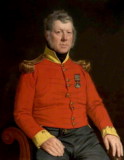

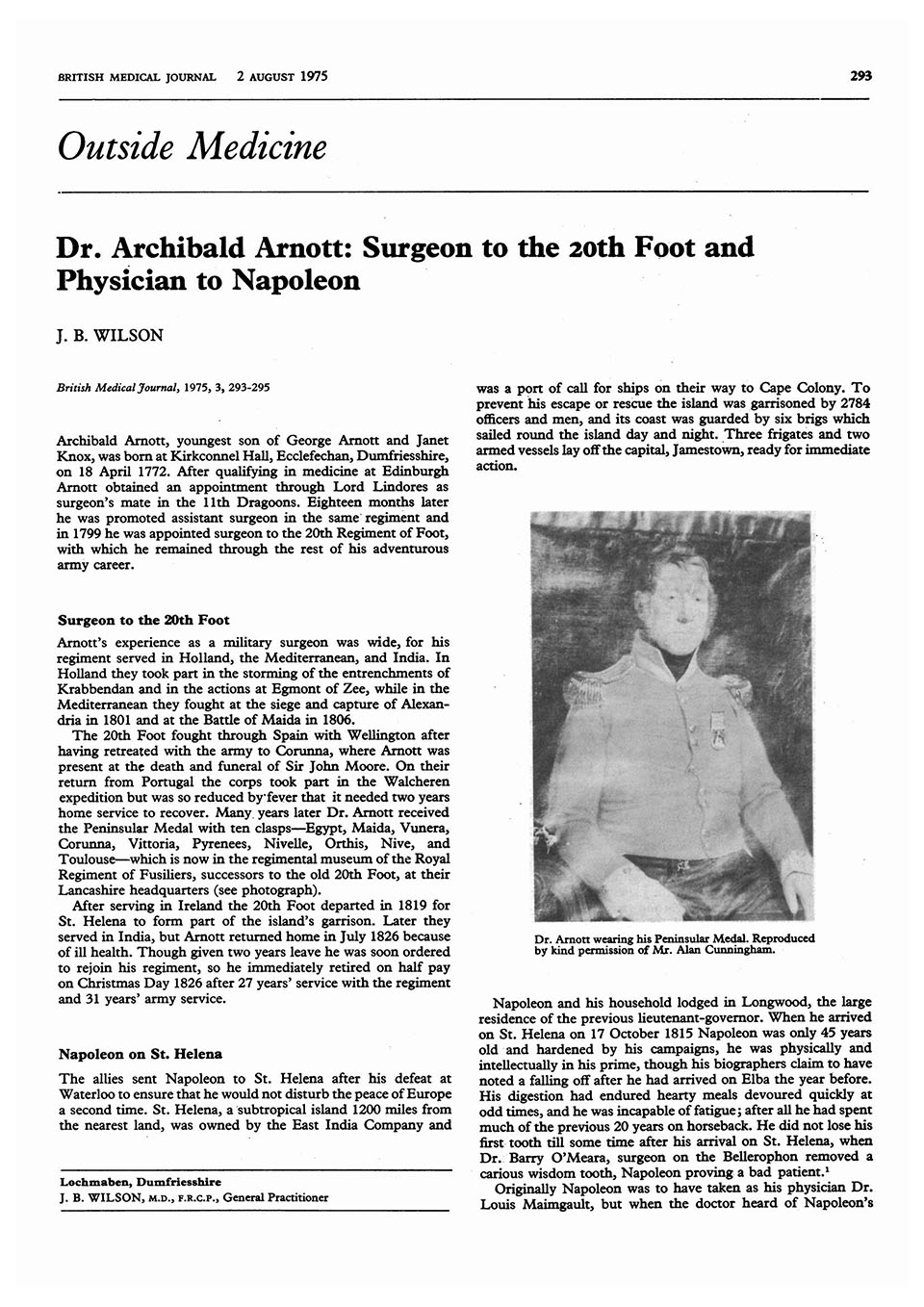
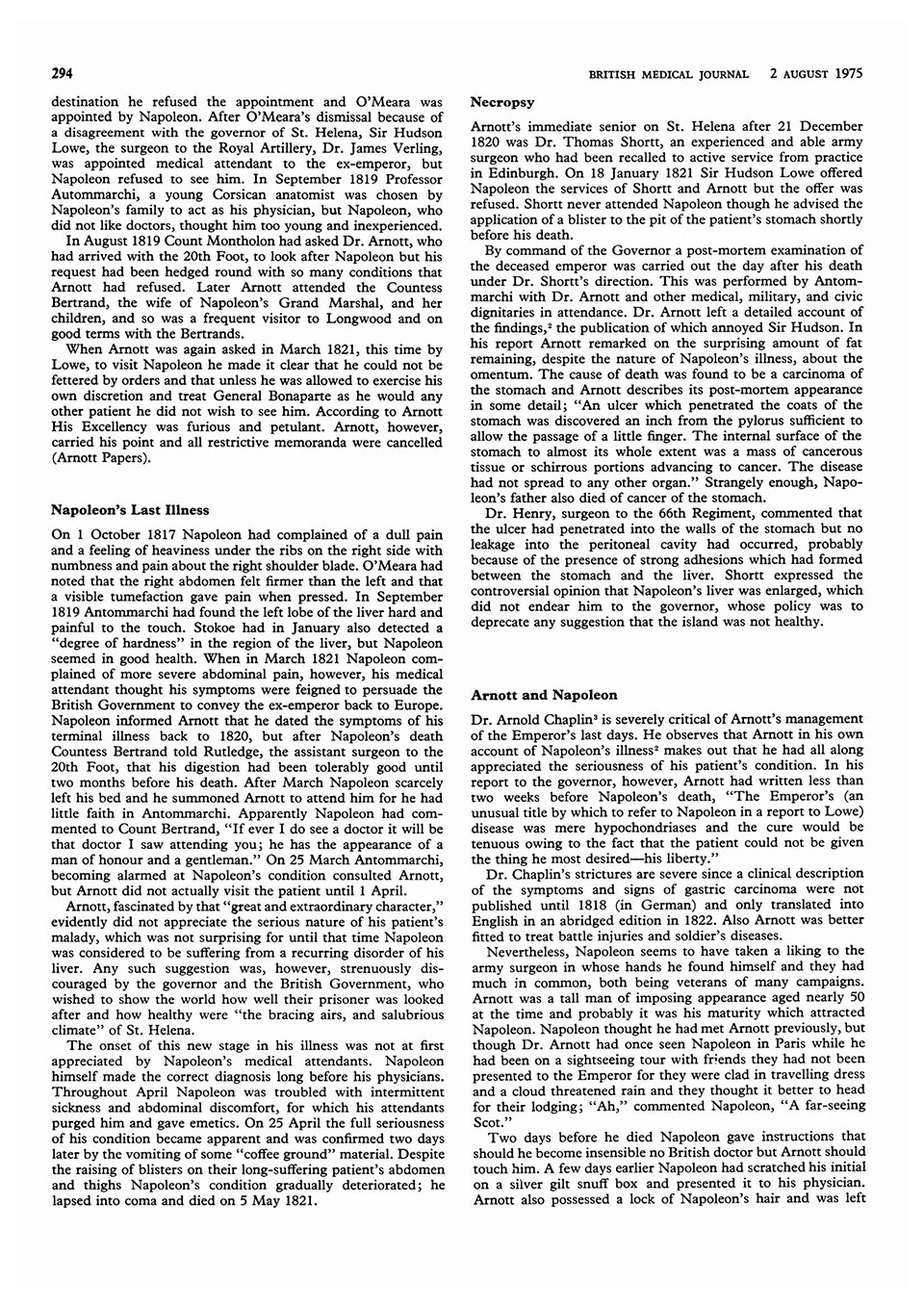

From Wikipedia, the free encyclopedia
Archibald Arnott
Archibald Arnott.jpg
Born 18 April 1772
Ecclefechan, Dumfries, Scotland
Died 1855 (aged 82–83)
Ecclefechan, Dumfries, Scotland
Occupation British Army surgeon
Known for Napoleon's doctor on St. Helena
Archibald Arnott (18 April 1772 – 1855) was a British Army surgeon best remembered as Napoleon's doctor on St. Helena, and who was present at the Emperor's autopsy.[1] He moved back to Ecclefechan in his retirement and is buried in Ecclefechan churchyard.
British
Army surgeon
He entered the British Army on 14 April 1795 and was posted to the 11th Hussars as Assistant Surgeon. Arnott was promoted to Surgeon on 23 August 1799. He followed his unit to Holland and was present at the storming of the entrechments at Krabbendam. He was later transferred to the 20th Regiment of Foot at Menorca and was present at the storming of Alexandria. He continued to served with the 20th Regiment at Malta, Sicily and Calabria and was present at the battle of Maida.
He continued to serve with the
20th Regiment at Vimiera and in the retreat from the Battle of Corunna.
He followed his unit in the Walcheren expedition where his military unit
was decimated by fever. In 1812, Arnott, served with the Duke of Wellington
in his campaigns until the end of the war, including the battle of Vittoria,
in the Pyrenees and in India.
Arnott's belt buckle worn whilst attending Napoleon on his death bed.
Buckle is the Regiment Badge of the 20th Foot. Collection of the Yuko
Nii Foundation.
As the fourth and last of Napoleon's physicians on St. Helena, Arnott arrived, following his regiment in 1819, and on 21 April 1821 visited Napoleon in his professional capacity. He quickly established excellent relations with the Emperor, becoming his most trusted doctor, and attended to him until his death. The Emperor was bedridden for some days as a result of persistent vomiting and Arnott prescribed potions, with no initial results, eventually prescribing a sedative generally thought to be opium, which relieved the Emperor's symptoms. On 3 May, Arnott prescribed calomel for the Emperor's constipation with good results. Prior to his death, Napoleon ordered a snuff box brought to him and carved an "N" with a pen knife and presented it to Dr. Arnott, along with a locket of his hair, a pair of duelling pistols and a handkerchief. The snuffbox was last in the possession of Alan Cunningham, a British Army officer. The pistols are in the collection of the Small Firearms Museum, Warminster, Wiltshire.
During the night following the Emperor's death, Arnott took a death mask made from surgical wax (as no gypsum was available on the island) and inscribed it with his signature and the date 6 Mai 1821. This is now in the collection of the Musée Masséna in Nice, France.
On 3 May 1821 Napoleon gave instructions that should he become insensible, no English physician but Arnott was to touch him. Napoleon died on 5 May 1821, and Arnott attended his post-mortem examination.[1] The Emperor bequeathed Arnott six hundred Napoleons and the British government gave him an additional payment of five hundred pounds.
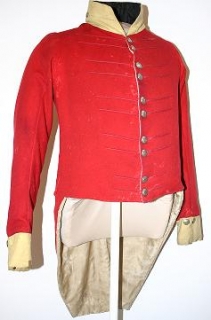 |
Surgeon-Major Arnott's Tunic, Collections Surgeon-Major Arnott's Tunic Archibald Arnott was the
20th Regiment's surgeon from 1799 to 1826. As the 20th Regiment
was stationed on the island of St Helena from 1819 to 1822, Surgeon
Arnott attended Napoleon in his final weeks, and carried out the
autopsy on his body. Arnott's tunic was discovered in the attic
of a damaged house in Lockerbie following the 1988 air disaster. |
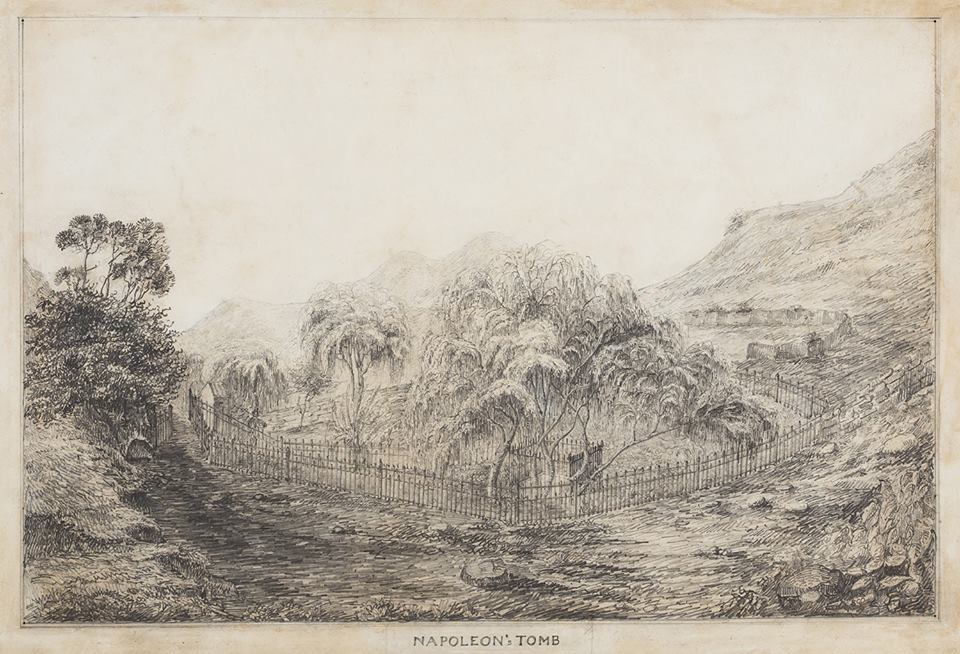
The Fusiliers Museum recently acquired this sketch of Napoleon's tomb on the island of St Helena drawn by Captain Robert Carter Oakley. He was stationed with the 20th Regiment of Foot on the island to guard Napoleon before his death in 1821. Pop into the museum to find out more about this fascinating chapter of the Regiment's history!
